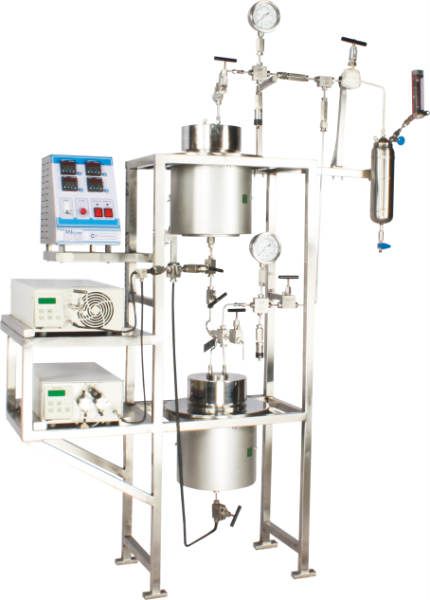The 5 kw laboratory scale fluidized bed reactor de scribed in the article is the second generation of the reactor used by fängmark 20 21 there are several unique features about our 5 kw reactor.
Laboratory scale fluidized bed reactor.
A bed section b freeboard section and c conical closure section with inlet cone.
After 50 g of a dried catalyst was charged an air flow 200 220 or 240 l h was produced by air compressor and fed to the fluidized bed to fluidize the catalyst particles.
The reactor system consists of four parts.
However the design and operation of industrial scale fluidized bed reactors for the conversion of stc to tcs is currently based on ad hoc rules of thumb and operator experience rather than on reaction engineering principles.
Catalyst particles were attrited at room temperature in the laboratory scale fluidized bed.
Thus it is important to have available fixed bed reactors capable of operating at intermediate interstitial fluid velocities to establish the relationship between 1 k.
The reactor system consists of four parts.
A bed section a.
Morris and keairns 1979 have described a reactor made of inconel 600 35 mm i d 330 mm long placed inside a.
The size of the laboratory scale fluidized bed reactor is 5 kw which corresponds to a fuel feeding rate of approximately 1 kg h.
The design parameters which affect the performances are identified and discussed.
The reactor consists of three sections.
The interstitial fluid velocities obtainable in laboratory scale fixed bed reactors determine that portion of the relationship dominated by stagnant film diffusion resistance.
The design of this reactor is thoroughly described.
Several relatively large laboratory scale high pressure fluidized beds designed for pyrolysis and gasification experiments have been reported in the literature.
A bed section.
The size of the laboratory scale fluidized bed reactor is 5 kw which corresponds to a fuel feeding rate of approximately 1 kg h.
A laboratory scale fluidized bed reactor was designed and fabricated successfully.
Fluidized bed reactors fbrs are chemical reactors in which catalytic particles interact with a gas stream that is fed from the bottom such that the mixture emulsion phase behaves as a fluid.
This latter process is widely used in laboratory scale systems by fluidizing the bed in a once through cycle with hcl in.






























